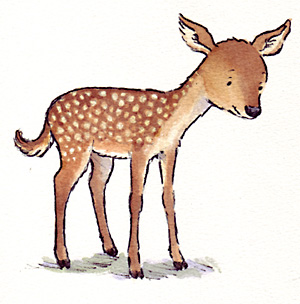![]()


Summarizing the vast amount of work related to language and literacy standards is a mind-boggling task because there are so many well-respected sources to refer to. Four organizations, however, have made significant contributions to our understanding of what constitutes the best in language and literacy education. They are: the International Reading Association, the National Council of Teachers of English, the National Research Council’s Committee on the Prevention of Reading Difficulties in Young Children, and the National Association for the Education of Young Children.
Language and Vocabulary Development
For young children, this includes...
- Taking part in meaningful conversations with adults about many different topics
- Listening to and using all kinds of new words: noun, verb, adjective, adverb
- Engaging in many different experiences in order to have interesting
things to think
and talk about - Singing songs, chanting rhymes, and doing fingerplays
- Listening to books that have stimulating language and vocabulary
Phonological Awareness
For young children, this includes...
- Playing with the sounds of language through songs, rhymes, chants
- Playing with both real and nonsensical rhyming words
- Hearing how some words have the same beginning sound (Peter/peach)
- Hearing the difference between words that sound very similar (boat/goat, witch/wish)
Understanding Stories
For young children, this includes...
- Listening to stories read from books, told orally, told with puppets or as drama, and recorded on tapes or CDs
- Sharing their own stories and experiences orally and through artwork
- Talking about the characters in stories
- Recalling the sequence of simple stories
Book Awareness
For young children, this includes...
- Knowing where books are kept
- Handling books gently
- Holding a book right-side-up
- Opening the cover of the book first
- Becoming aware of the parts of a book (front and back covers, endpapers, title page, author, illustrator, dedication, etc.)
Book Exposure
For young children, this includes...
- Hearing a wide variety of books and stories: fiction, non-fiction, poetry
- Hearing books and stories that reflect all types of diversity: racial,
ethnic, language,
socio-economic, ability, gender, age, religious, and geographic
Comprehension
For young children, this includes...
- Understanding the meaning of language in everyday conversations and stories
- Asking questions and making comments relevant to conversations and stories
- Showing appropriate emotion during a story by looking sad or laughing
- Relating information and events in conversations and stories to their own life experiences
- Following who said or did what in conversations and stories
- Identifying a favorite part of a story and telling why
- Retelling stories by looking at illustrations, on a flannel board, with a puppet or stuffed animal, or through drama
- Responding to questions about stories, both open-ended questions as well as who, what, when, where, why, and how questions
- Memorizing some of the words from a story and finishing repetitive phrases or sentences
- Predicting what might happen next in a story
Knowledge of Print
For young children, this includes...
- Understanding that print conveys different kinds of messages
- Pointing to print from left to right and top to bottom as they pretend to read books
- Asking adults to read or write signs, books, labels, and other forms of print
- Being aware that letters can be represented in different ways
Letter and Word Awareness
For young children, this includes...
- Differentiating letters and print from pictorial, numerical, and graphic symbols
- Singing or chanting along when the alphabet is sung or recited
- Recognizing and/or naming some letters of the alphabet in their environment
(on their cubbies, art work, games, puzzles, signs) - Recognizing their name and a few other key words in their environment
- Adding letter-like symbols and/or letters to their art work, or making
signs for
block structures
Literacy as a Source of Enjoyment
For young children, this includes...
- Choosing to look at books on their own
- Having favorite books and asking for them to be read repeatedly
- Getting excited about a trip to the library
privacy policy terms of use about us contact us your account support us site map